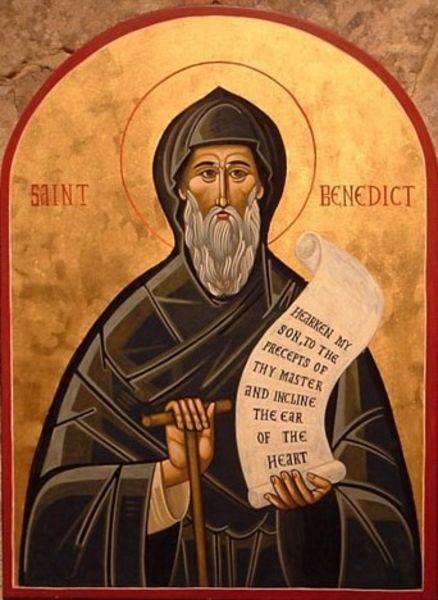 The emphasis in the spiritual life is on our searching for God. It is difficult not to admit this from the abundance of scriptural sources and the the witness of the saints. We know the accent of seeking when St Benedict makes this the key vocation matter in his Holy Rule. Sometimes I wonder, however, if it is more of realization that we do not find Him, but He has found us. Do we believe that God seeks us? Perhaps it is the experience of both of God seeking us, and we Him. I am thinking of the poem of Francis Thompson, “The Hound of Heaven.”
The emphasis in the spiritual life is on our searching for God. It is difficult not to admit this from the abundance of scriptural sources and the the witness of the saints. We know the accent of seeking when St Benedict makes this the key vocation matter in his Holy Rule. Sometimes I wonder, however, if it is more of realization that we do not find Him, but He has found us. Do we believe that God seeks us? Perhaps it is the experience of both of God seeking us, and we Him. I am thinking of the poem of Francis Thompson, “The Hound of Heaven.”
Nevertheless, St. Gregory the Great describes in terms applicable to anyone seriously engaged in the search for God: “At first she sought but did not find, but when she persevered it happened that she found what she was looking for. When our desires are not satisfied they grow stronger… Holy desires likewise grow with anticipation… Anyone who succeeds in attaining the truth has burned with such a love.”
Back to St. Benedict. His first idea for his school is that prayer should be central to those who seek God. Like the saints teach us, you can’t find the Lord without spending time with Him, listening to Him, learning from him and praising Him. Mother Church gives various methods of prayer: in her liturgies like the Sacrifice of the Mass (Divine Liturgy) and the Divine Office, in Eucharistic Adoration, lectio divina, the Holy Rosary, silence, quiet works of charity, and just simply opening your heart and mind to God, giving Him praise and asking for His help and intercession. Then there is obedience to all of the above and to our spiritual director, the way of humility and the experience of community.
We don’t find God alone, but with and through others; so with St. Mary Magdalen, may we search and find God. May the Magadeln pray for us.






